Syn.: Clematis atragenoides Batalin, Clematis chrysantha Ulbr., Clematis eriopoda Maxim., Clematis orientalis var. tangutica Maxim., Clematis tibetana subsp. tangutica (Maxim.) Brandenb.
Family: Ranunculaceae Juss.
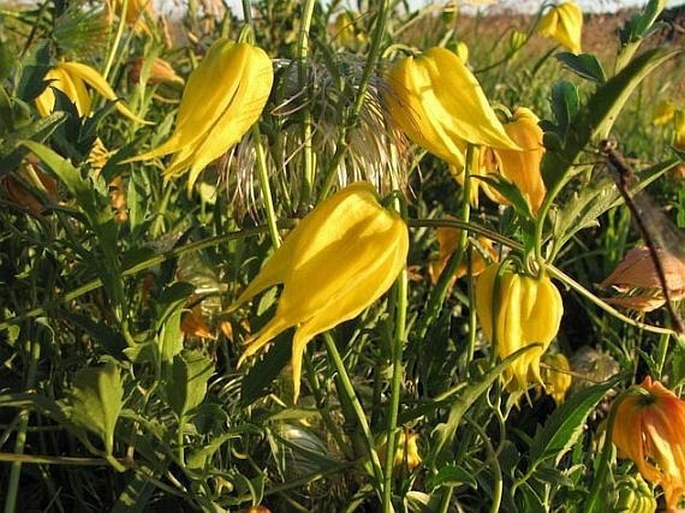
Distribution: Central Asian species, found in southeast Kazachstan, Mongolia, western Chinese provinces Gansu, Qinghai, Shaanxi, Sichuan, Xinjiang, in Tibet and Kashmir. In the whole range there are several varieties. This is a decorative species grown in many regions of the world in gardens and parks, unfortunately it easily escapes and can become invasive. This invasion is presently happening in southwest of Canada, from British Columbia to Manitoba. It is found even in Czechia and central Europe but luckily this yellow flowered variety is not invasive. Identification of yellow flowered clematis is quite difficult as C. tangutica is not the only one; you have to count in Clematis orientalis, C. tibetana, C. serratifolia, etc. Canadian sources report hybrids of C. tangutica and C. tibetana; on both sides of Atlantic you can purchase a variety of garden cultivars.
Ecology: In the wild it grows in forests and shrubby slopes, an banks of streams, at elevations from 300 to 4900 m. It blooms from June to August.
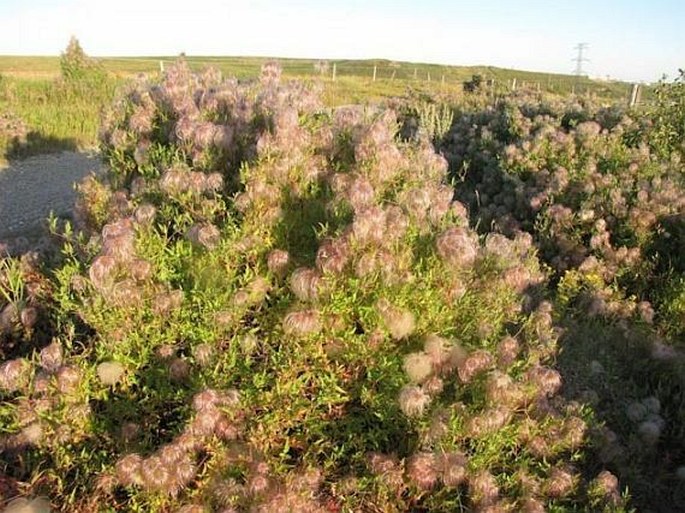
Description: Perennial woody climber, 3–4 m long, in dry habitat growing only into an erect shrub. Leaves are opposite, deciduous, compound with 5 leaflets; leaflets oval 2–5 cm long, 1–3 cm wide, margins toothed; leaf stalks twisting. Flowers are solitary, borne on long stalks, terminal sometimes axial; yellow, 3–6 cm across; 4 sepals, petal like, yellow, sometimes with red markings, undersides slightly hairy; stamens and pistils numerous. Fruit is an achene, style feathery, 4.5–6 cm long.
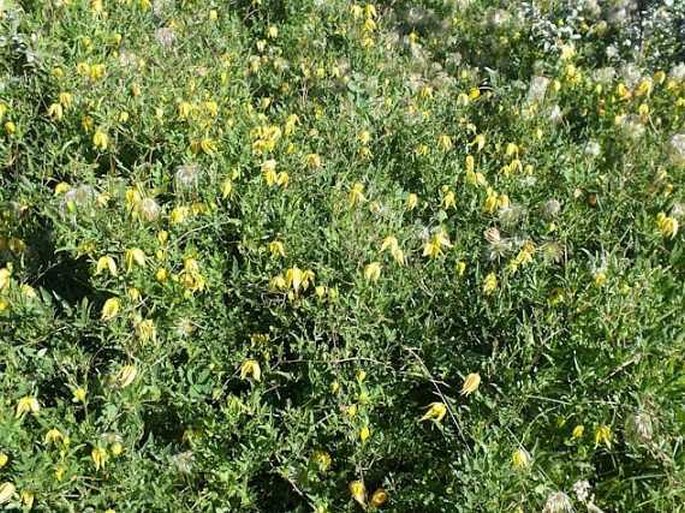
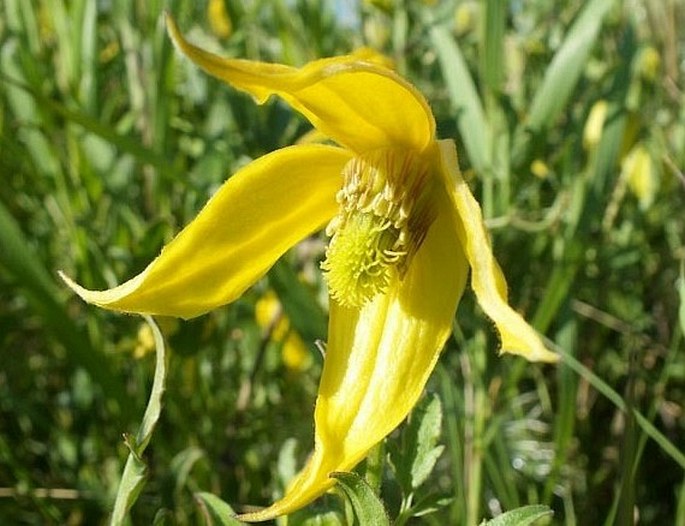
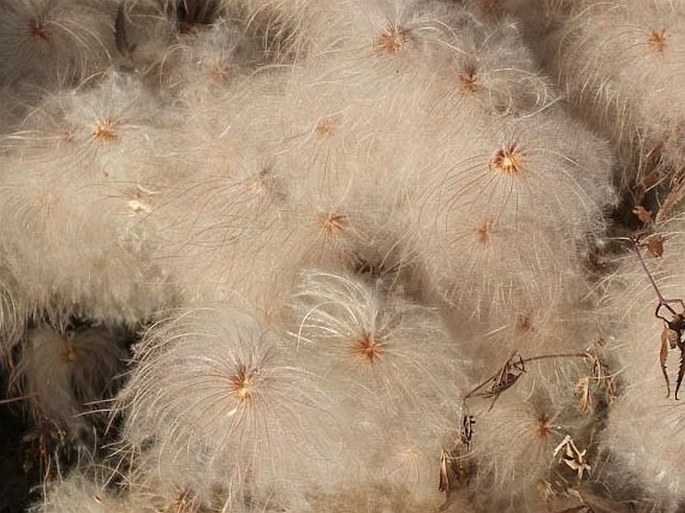
These images were taken in Canada, Alberta, Calgary, Confluence Park (2013).


